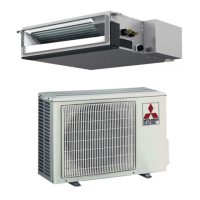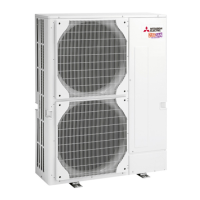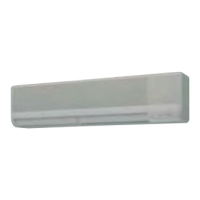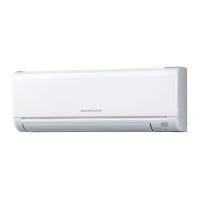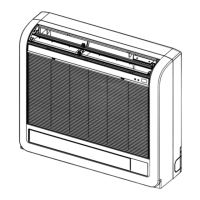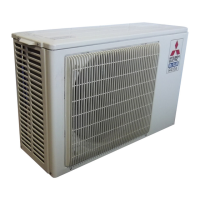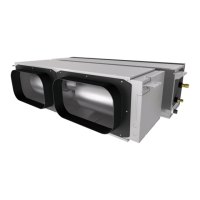
Do you have a question about the Mitsubishi Mr.Slim Series and is the answer not in the manual?
| Cooling Capacity | 9, 000 - 36, 000 BTU/h |
|---|---|
| Refrigerant | R410A or R32 (depending on the model) |
| Operating Temperature (Cooling) | 5°C to 46°C |
| Operating Temperature (Heating) | -15°C to 24°C |
| Noise Level (Indoor Unit) | 19 - 45 dB |
| Indoor Unit Dimensions | Varies by model |
| Outdoor Unit Dimensions | Varies by model |
| Weight (Indoor Unit) | Varies by model |
| Weight (Outdoor Unit) | Varies by model |
| Features | Inverter Technology, Quiet Operation |
| Power Supply | 208/230V, 1-phase, 60Hz |
Explains unit symbols and provides general safety warnings and cautions.
Covers essential safety measures for grounding and electrical protection.
Specifies optimal locations and conditions for indoor unit installation.
Outlines criteria for selecting the best site for the outdoor unit.
Details site suitability, structural support, and required accessories.
Step-by-step instructions for installing hanging bolts for unit support.
Lists and describes the accessories provided with the indoor unit.
Guidance on safely transporting the indoor unit to its installation location.
Procedures for suspending and leveling the indoor unit body.
Verifying unit alignment and securing hanging bolts for stability.
Covers pipe sizes, cutting, burr removal, and flaring techniques.
Guidance on connecting refrigerant pipes and insulating them.
Detailed steps and checks for correct flaring of pipe ends.
Steps for performing leak tests and purging the refrigerant lines.
Instructions for correctly installing the unit's drain piping.
Guidelines for connecting ducts, insulation, and air filter placement.
Instructions for connecting the unit's power supply and internal wiring.
Details on connecting indoor unit wiring to terminal blocks.
Wiring and setting up wireless and wired remote controllers.
Configuring unit functions like address and voltage settings.
Essential checks before starting the unit for testing, including insulation.
Steps to conduct test runs and verify unit operation using the remote controller.
Identifying and resolving common errors detected by indoor/outdoor units.
Configuration of the automatic restart feature for power failures.
Guidelines and procedures for charging refrigerant into the system.
